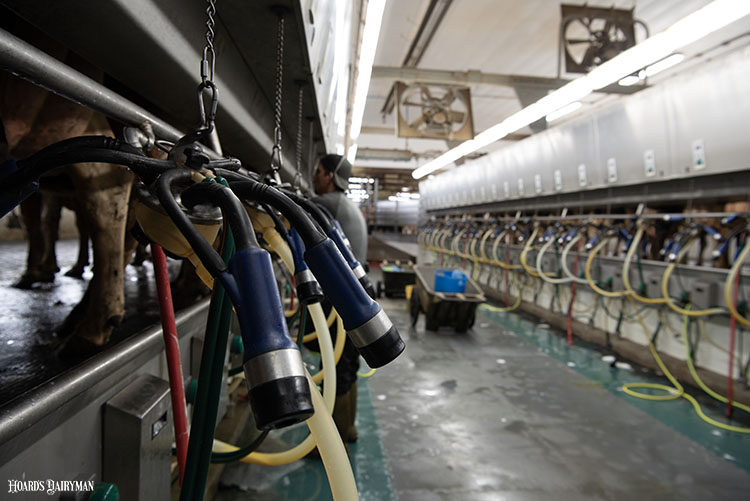
Despite the progress made in udder health, mastitis is still the most common disease of dairy cattle. In fact, 20% to 40% of cows develop a clinical case each lactation, said Pam Ruegg during the National Mastitis Council Annual Meeting.
Between lactating mastitis cases and dry-off treatment, the majority of antibiotics used on a dairy are for intramammary infections, continued the Michigan State University professor. “If we want to reduce antimicrobial use, we have to look at mastitis treatment,” she described. Less antibiotic usage contributes to reducing antibiotic resistance while also saving farms money and time on treatment.
The cost of mastitis includes both direct costs, such as any antibiotics, and indirect costs, which include discarded milk. While preventing mastitis is the most cost-effective way to limit these expenses, Ruegg focused on how implementing accurate mastitis treatment protocols can avoid excess costs when cases do come up.
Her team studied 37 farms to see how they were treating mastitis and what costs were being incurred. Ruegg first noted that almost one-third of the farms didn’t use any antibiotics on mastitis cases. “This is a shift we should be proud of,” she said.
From the farms that did use antibiotics, serious differences in cost were seen based on the amount of milk that was discarded. This was often because farms were treating cows for longer than was directed on the label since the milk still looked bad, Ruegg said. That extra-label usage, however, means that cows are subject to longer milk withholding times — pushing more milk down the drain.
Ruegg’s team determined the cost of each case of mastitis they observed by using the cow’s average milk production at the time of diagnosis and the average milk price for that month. They determined that a case of mastitis cost between $120 and $350, with an average of $192. More than half of that cost, Ruegg said, was due to discarded milk.
It’s easy to see how additional withholding days quickly raises the cost of a mastitis case. They developed an equation that correlated milk withhold time and treatment cost to total case cost. At an example of a 25% rate of mastitis and just one extra day of treatment with milk withheld, Ruegg illustrated that a dairy could incur $18,000 in additional costs in a year.
More milk is also discarded when higher producing cows are treated for mastitis. For example, in their study, Ruegg said it cost $163 to treat a first lactation cow for mastitis and $196 to treat a third lactation cow. A case of mastitis late in lactation cost about $185, while a case at peak production averaged $218.
Choose who to treat wisely
The only way you recoup those costs is for the cow to milk for about three to four months after the infection has cleared, Ruegg said. That means we should only be deciding to treat cows that will stay in the herd for that time period and have an infection that will respond to antibiotic treatment.
The value of antibiotic treatment is in the margin between a spontaneous cure and the cure possibility with antibiotics, Ruegg explained. She compared that the spontaneous cure rate of mastitis caused by Staph. aureus is about 10%, whereas a case caused by E. coli has about a 95% chance of clearing on its own. Therefore, there is a much higher marginal benefit of using antibiotics on a Staph. aureus case. This logic is why culturing milk samples makes sense to determine the treatment pathway. Milk yield is not affected by not treating nonsevere clinical cases, Ruegg noted.
Mastitis remains costly on dairy farms, but when it does occur, we can limit expenses by first making sure we are treating cows that are going to benefit from it and recoup the losses of antibiotics and discarded milk. Following stated protocols is then critical to avoid additional milk withholds.








